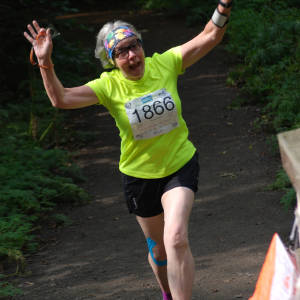Hunda Island
Another lovely day saw us on the road first of all to Kirkwall to book a ticket for Tony on the ferry to Hoy tomorrow. He will have a day to himself to do a long walk.
From Kirkwall we turned south to do a walk which would give us views of the four Churchill Barriers. We crossed three of them en route to the pretty village of Burray (pronounced Burry, place names ending in ay all lose the a, so Papa Westry etc.) The barriers were built between May 1940 and September 1944 as naval defences following the sinking of a British ship by a German submarine in Scapa Flow. They now act to link several smaller islands to the Mainland.
Leaving the village behind, we climbed to the highest point where we had a 360 degree view. We passed by very strange fences which looked from a distance to be made of black stones but were actually bales of used tyres butted together!
Descending to the track we could see our destination, the small island of Hunda, below, joined to Burray by a pedestrian causeway. Unfortunately our guide book, which has been excellent all week, let us down here because the landowner had decided to padlock the gate to the path and raise private signs. We tried for a detour around and found another padlocked gate. Thankfully a second detour saw us reaching the rough path on the shore and we were looking forward to crossing the causeway and going up the hill on Hunda. There were several different birds here: a nesting Bonxie close to a rabbit warren- takeaway on the doorstep! There were many oystercatchers; terns; herring gulls and several geese. Crossing the causeway took us ten minutes, only to find another padlocked gate at the other side, bah! Fed up we decided to have a snack, enjoy the view and then head back to Burray. We met a Scottish couple on the way over the causeway who told us there is freedom to roam in Scotland and so they had climbed over the gates!
We had time to fill before our booked time at Maeshowe Chambered Cairn so we stopped off back in Kirkwall for a cuppa and cake at the Daily Scoop. It must have been school finishing time because there was a long line of little ones and Mums at the ice cream counter.
At the Maeshowe Cairn Visitor Centre, we boarded the bus for the short journey to the Cairn which looks like a large grassy knoll from the outside. The guide was a geologist and was both informative and entertaining. There is a limit of 16 people on the tour as it goes inside the chamber. As you enter you have to stoop to walk up the long stone lined entrance passage and then you emerge in to the chamber which has alcoves on three sides. It is thought bodies may have been placed in these but there is little evidence about the use of the cairn because no artefacts have been found. One thing is known which is similar to other neolithic sites and that is at midwinter, the light comes down the passage and lights up as a rectangle on the far wall, so one theory is that it could have been a calendar. Some facts about Maeshowe taken from the Historic Environment Scotland website:
each wall of the 10m-long passage is formed mostly of a single, gigantic sandstone slab up to three tonnes in weight
at each corner of the central chamber is a magnificent upright standing stone
the floors, back walls and ceilings of the three side cells (off the central chamber) are each made of single stone slabs
It is building on a grand scale. Towards the end of the tour, our guide pointed out the Viking graffiti. Apparently a band of Vikings broke in to the cairn through the roof, hoping to find treasure. They left behind graffiti on the walls, some of it puerile, a parallel with some of the writing we see on the back of toilet doors today and very entertaining!
Another enjoyable day rounded off with dinner at the Ferry Inn.

Comments
Sign in or get an account to comment.


